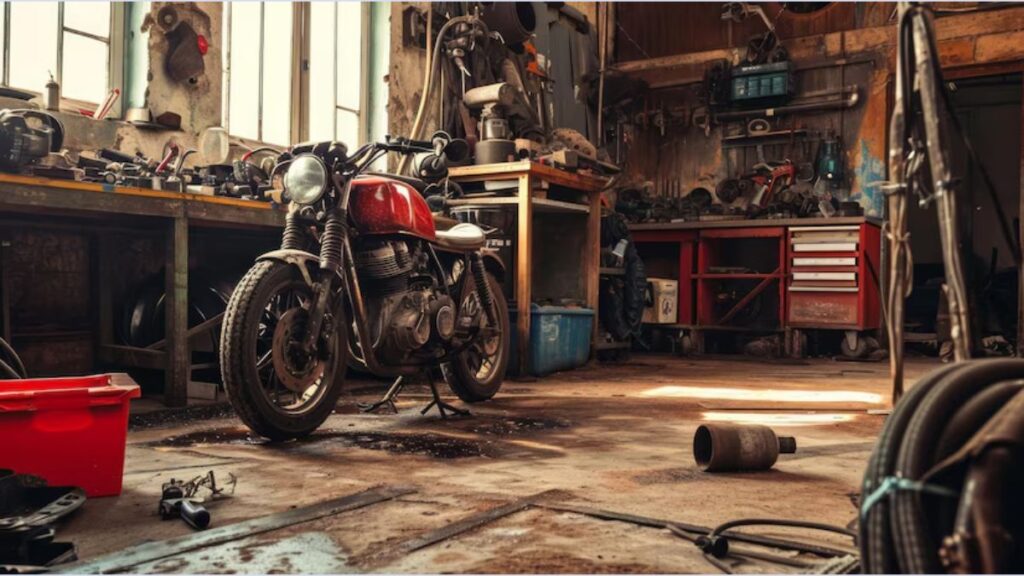If you’re a motorcycle enthusiast or a DIY mechanic, you know the thrill of finding that perfect part at a bargain price. Motorcycle salvage yards are treasure troves for such finds, offering a vast array of parts that can breathe new life into your bike. In this guide, we’ll delve into everything you need to know about motorcycle salvage yards, from what they are and their benefits to how to find the best ones near you.
What Are Motorcycle Salvage Yards?
Motorcycle salvage yards, also known as motorcycle junkyards or scrap yards, are businesses that purchase wrecked or non-functional motorcycles. They then dismantle these bikes and sell the usable parts. These parts can range from engines and transmissions to smaller components like mirrors and brake pads. Salvage yards serve as a recycling hub, ensuring that valuable parts are not wasted.
Benefits of Using Motorcycle Salvage Yards
Cost Savings
One of the most significant advantages of using a motorcycle salvage yard is the cost savings. New parts can be expensive, especially for older or rare models. Salvage yards offer these parts at a fraction of the cost, making repairs and restorations more affordable.
Availability of Rare Parts
For those with vintage or discontinued motorcycles, finding specific parts can be a challenge. Salvage yards often have a wide variety of parts from different makes and models, including hard-to-find pieces that are no longer in production.
Environmental Impact
By purchasing used parts, you’re contributing to the recycling and reuse of materials. This reduces the need for new parts to be manufactured, which in turn lessens the environmental impact. It’s a win-win for both your wallet and the planet.
How to Find Motorcycle Salvage Yards Near You
Online Directories and Websites
Websites dedicated to auto parts and salvage yards are a great starting point. Sites like Salvage Yards Online and eBay Motors have extensive listings of salvage yards across the country. You can search by location, part type, and even specific motorcycle models.
Local Listings and Classifieds
Check local classifieds like Craigslist or your area’s community boards. Often, smaller salvage yards may not have a robust online presence but will advertise locally.
Word of Mouth and Community Recommendations
Ask fellow motorcycle enthusiasts or join online forums and social media groups. Personal recommendations can lead you to reputable salvage yards that others have had good experiences with.
Top Websites to Locate Motorcycle Salvage Yards
Salvage Yards Online
This website offers a comprehensive directory of salvage yards. It’s user-friendly and allows you to search for specific parts and locations.
eBay Motors
eBay Motors isn’t just for auctioned bikes; it also has a wide range of used parts from various sellers. It’s a great place to find specific parts with the added security of buyer protections.
CycleTrader
Known for selling motorcycles, CycleTrader also lists parts and accessories. Their search filters make it easy to find exactly what you need.
Craigslist
A local favorite, Craigslist can connect you with nearby sellers and salvage yards. It’s perfect for those who prefer to inspect parts in person before buying.
Things to Consider When Choosing a Salvage Yard
Reputation and Reviews
Before making a purchase, check the salvage yard’s reputation. Online reviews and ratings can provide insight into the quality of their parts and customer service.
Inventory and Availability
Ensure the salvage yard has a wide range of parts and frequently updates their inventory. A yard with a large and varied selection increases your chances of finding what you need.
Pricing and Negotiation Policies
Compare prices from different yards to ensure you’re getting a good deal. Some yards may also be open to negotiation, especially if you’re buying multiple parts.
Common Parts Found in Motorcycle Salvage Yards
Engines and Transmissions
These are often the most sought-after parts. Salvage yards typically have engines in various conditions, from complete units to those needing some work.
Wheels and Tires
You can find wheels, tires, and even rims. Make sure to check for wear and tear to ensure they are still in good condition.
Body Parts and Frames
Body parts such as fenders, gas tanks, and seats are commonly available. Frames can also be found but should be inspected for any structural damage.
Electrical Components
Items like wiring harnesses, ignition coils, and battery boxes are available and can be much cheaper than new replacements.
Tips for Buying Parts from a Salvage Yard
Inspecting the Parts
Always inspect parts for damage or excessive wear. Bring tools to test components if possible, especially for electrical parts.
Understanding Return Policies
Before purchasing, ask about the return policy. Some yards offer returns or exchanges if the part doesn’t work, while others may not.
Negotiating Prices
Don’t be afraid to negotiate. Salvage yards often have flexible pricing, especially if you’re buying several items.
How to Salvage Parts from Your Own Motorcycle
Preparing Your Motorcycle for Salvage
Clean your motorcycle and remove any personal items. It’s also a good idea to document its condition with photos.
Essential Tools and Equipment
Ensure you have the necessary tools, such as wrenches, screwdrivers, and pliers. A motorcycle lift can also be helpful.
Step-by-Step Salvage Process
- Remove the Battery: Start by disconnecting the battery to avoid any electrical hazards.
- Drain Fluids: Safely drain all fluids, including oil, coolant, and fuel.
- Disassemble Parts: Begin with larger components like the engine and move to smaller parts. Label and store them properly.
Legal Considerations
Title and Ownership Issues
Ensure you have the title if you’re selling your motorcycle to a salvage yard. This proves ownership and avoids legal complications.
Understanding Salvage Titles
If you buy a motorcycle with a salvage title, understand that it has been declared a total loss by an insurance company. These bikes can be rebuilt but may require inspections before being roadworthy.
Compliance with Local Laws
Check local regulations regarding the sale and purchase of salvage parts. Some areas have strict laws to prevent the sale of stolen parts.
Selling Your Motorcycle to a Salvage Yard
Assessing the Value of Your Motorcycle
Get an estimate of your motorcycle’s value considering its condition and the demand for its parts. Online tools can help you gauge its worth.
Preparing Your Motorcycle for Sale
Make sure your motorcycle is clean and remove any non-essential accessories. Gather all necessary documents, including the title.
Negotiating with Salvage Yards
Be prepared to negotiate. Salvage yards are businesses looking for a deal, but with the right approach, you can get a fair price.
Environmental Benefits of Motorcycle Salvage Yards
Recycling and Reuse of Parts
Salvage yards promote the recycling and reuse of motorcycle parts, reducing the need for new materials and the environmental impact of manufacturing.
Reducing Waste and Pollution
By keeping parts out of landfills and reusing materials, salvage yards help minimize waste and pollution.
Stories from Motorcycle Enthusiasts
Success Stories and Testimonials
Many riders have found rare parts and saved money through salvage yards. These stories highlight the benefits and joys of finding the perfect part.
Challenges and Solutions
While there are challenges, such as finding specific parts, the satisfaction of restoring a bike can outweigh these hurdles.
Future Trends in Motorcycle Salvage Yards
Technological Advancements
New technologies, like 3D printing, could revolutionize the availability of rare parts. Online marketplaces and improved inventory systems also make it easier to find what you need.
Market Growth and Opportunities
The market for used parts is growing as more riders look for cost-effective and environmentally friendly options. This trend points to a bright future for salvage yards.
Conclusion
Motorcycle salvage yards are a valuable resource for anyone looking to repair, restore, or modify their bike on a budget. With the right approach, you can find quality parts, save money, and contribute to environmental sustainability. Happy hunting!
FAQs
What is the difference between a salvage yard and a junkyard?
A salvage yard specializes in vehicles and parts that can be reused or recycled, while a junkyard may deal with all kinds of scrap materials.
Are parts from salvage yards reliable?
Yes, many parts from salvage yards are in good condition. However, it’s essential to inspect them thoroughly before purchase.
Can I return parts to a salvage yard if they don’t fit?
Return policies vary by yard, so always ask about returns and exchanges before buying.
How do I know if a salvage yard is reputable?
Look for reviews online, ask for recommendations, and check if the yard is licensed and follows local regulations.
What should I bring when visiting a salvage yard?
Bring tools for inspecting parts, gloves for safety, and a list of the parts you need. A camera can also be useful for documenting items.







